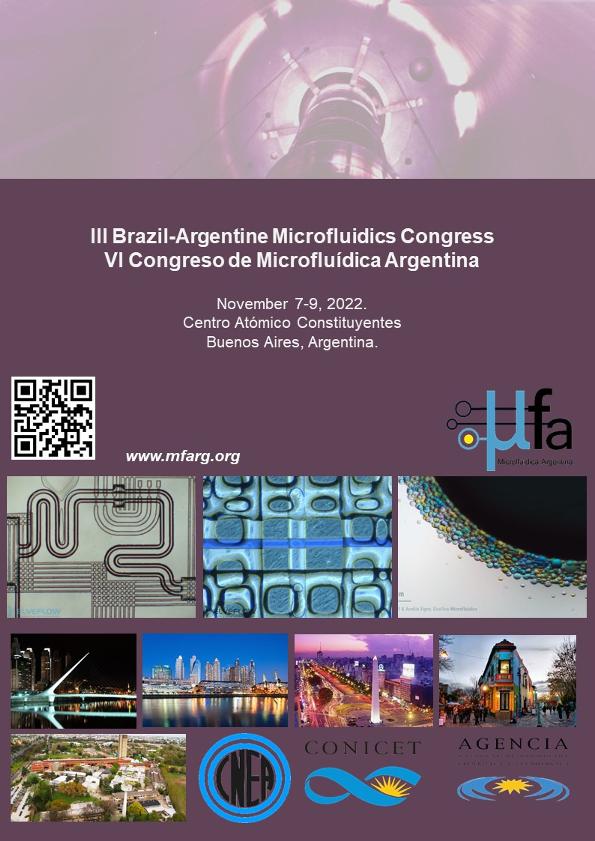Evento
The effect of increasing ion capacity in the porous phase of a shock electrodialysis cell
Tipo del evento:
Congreso
Nombre del evento:
III Brazil-Argentine Microfluidics Congress; VI Congreso de Microfluídica Argentina
Fecha del evento:
05/11/2022
Institución Organizadora:
Comisión Nacional de Energía Atómica. Centro Atómico Constituyentes;
Título del Libro:
Book of Abstracts: III Brazil-Argentine Microfluidics Congress and VI Congreso de Microfluídica Argentina
Editorial:
Comisión Nacional de Energía Atómica. Centro Atómico Constituyentes
Idioma:
Inglés
Clasificación temática:
Resumen
Shock electrodialysis (SED) is an emerging electrokinetic purification method which is able to deionize solutions. This process only requires power for moving fluids through porous media, which avoid the need for high temperature (distillation) or high pressure (reverse osmosis, RO) systems. SED is essentially based on ion concentration polarization phenomenon. Concentration polarization is an interphase phenomenon which typically occurs when there is a mass transport limitation for the faster diffusing species in the fluid phase compared to the transport in the selective layer. Consequently, there is a reduction of the faster diffusing component in the boundary layer next to the selective layer and thus creating a depleted zone near the interphase. If a porous material is next to the interphase, now concentration polarization becomes higher due to the added diffusion limitation provided by the porous material and thus reducing even more the concentration of the faster diffusing species in the interphase. In our previous work, it was shown it is possible to extract a less concentrated electrolyte solution by continuous flow experiments in a miniaturized cell [1]. For this purpose, a biocarbon obtained through the pyrolysis of compressed residues from the sugarcane harvest was used as a porous phase to improve the polarization of the ion concentration. Through this system, the conductivity of a 0.1 mM KCl feed solution can be lowered by 25 percent over a period of 4 h working at a flow rate of 0.7 ccm and 5.0 V of applied voltage. This process was reversible by coming back to normal soon after the voltage was shut off. Different concentration ratios between the feed and the dilute phases can be obtained by changing the flow rate. This is an important advantage in terms of microfluidic device designs where operating flow rates are typically a few microliters. On the other hand, the separation performance between the feed and the more dilute outlet stream was improved by using a less permeable biochar material. In this work, the effect of increasing the ion capacity of the porous phase was studied by performing experiments through pulses of low concentration solutions (Fig. 1A). For this purpose, a zeolite material layer was included between two biochar disks. Fig. 1B shows the conductivity response when a pulse (1 cc) of low concentration solution (2 pS/cm) was injected into the feed. In the first injection, voltage was not applied. Voltage was switched on during the second injection. In this latter case, a significant depleted concentration stream at the cell outlet was observed. This is associated with the improved ion capacity of the porous phase due the presence of the zeolitic material.
Palabras clave:
Shock electrodialysis
,
Ion polarization
,
Electrolyte separation
,
Zeolite
Archivos asociados
Licencia
Identificadores
Colecciones
Eventos(INQUINOA)
Eventos de INST.DE QUIMICA DEL NOROESTE
Eventos de INST.DE QUIMICA DEL NOROESTE
Citación
The effect of increasing ion capacity in the porous phase of a shock electrodialysis cell; III Brazil-Argentine Microfluidics Congress; VI Congreso de Microfluídica Argentina; Buenos Aires; Argentina; 2022; 64-65
Compartir




